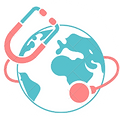Improving Medical Training with the HoloLens
- International Society of Pre-Health Researchers
- Sep 17, 2021
- 2 min read
Updated: Oct 4, 2021
By Sanjana Ravi
Smart glasses have been around for the past decade, slipping onto the faces of designers and innovators. Now, medical professionals are finding ways to improve medical training and the surgical experience for patients.
The Microsoft HoloLens 2 is a mixed reality pair of smart glasses, meaning they provide the best of both augmented and virtual reality: artificial images rooted in a realistic environment. The HoloLens targets the ever growing integration of technology into medicine, finding its way into medical education and long-distance surgical collaborations.
"I never fully understood [brain MRIs’] 3-D structure until I saw them in HoloLens.”
The HoloLens provides a holographic 3D representation of the human body, shedding light on complex or hidden structures that can be difficult to visualize. Users are able to interact with projected objects in a standardized setting, and can even practice simulated patient encounters with the corresponding app, HoloPatient. These tools are especially useful when studying anatomy, as students are able to see any bodily function or dysfunction and better recognize disease.
Medical universities such as Cleveland's Case Western Reserve have already implemented the HoloLens into their interactive anatomy classes. While donning the glasses, students can simultaneously zoom in on individual organ systems and converse with their peers. "Students and the professor can look at the same holographic image of the body together—and, at the same time, still see each other,” says Professor Mark Griswold. This allows greater insight into each student's individual thinking process and more intimate one-on-one instruction. Griswold remarks that that despite being a seasoned radiology researcher, he “never fully understood [brain MRIs’] 3-D structure until [he] saw them in HoloLens.”
"The glasses give surgeons a roadmap to successfully navigate around organs.”
Microsoft’s HoloLens also provides current medical professionals with an efficient way to integrate new perspectives and teamwork into their preoperative procedures. A key feature is picture segmentation, a feature that brings 2D scans to life.
"Surgeons can visualize precisely what they’ll encounter when they perform difficult surgeries," says Fow Media. "In surgery itself, the glasses give surgeons a roadmap to successfully navigate around organs.”
While the HoloLens gives surgeons the tools to walk through their ideas with a 3D visualization, it can also bring heads together when that isn’t enough. During a shoulder arthroscopy, Brazilian orthopedic surgeon Dr. Bruno Gobbato virtually connected with fellow surgeons Professor Thomas Gregory and Dr. John Erickson, who were tuning in from Paris and New Jersey, respectively. Gobbato was able to share 3D holographic images of the patient’s CT scans and gain their feedback in real time. The potential for global collaboration is limitless, as clinicians can seek guidance from colleagues who are millions of miles away.
By providing visuals and connections that are traditionally unavailable, the HoloLens gives medical students and professionals the platform to refine and enhance methods of learning and operating. As time passes, traditional methods of medicine continue to integrate with the realm of mixed reality--who knows what is next?
What are your thoughts on the HoloLens?
References:
.png)






Apex Hospital – a trusted name for IVF treatment in India, helping families and couples in the infertility center in India, sirsa region achieve their parenthood dreams. Our multi-specialty hospital offers expert care in infertility support, surgery in Sirsa, and advanced laparoscopic procedures at affordable prices. With a team of highly experienced doctors and medical experts, we ensure high-quality and personalized treatment for every patient. Visit- https://apexhospitalsirsa.com/apex-surgery.php
https://apexhospitalsirsa.com/apex-ivf.php , https://g.co/kgs/pnbRRoV
Great with detailed information. It is really very helpful for us. Village Talkies a top quality professional <a href="https://www.villagetalkies.com/"> Corporate Video Production Company in Bangalore </a> and also <a href="https://www.villagetalkies.com/explainer-video/"> best explainer video company in Bangalore </a> & 3d, 2d <a href="https://www.villagetalkies.com/animation-video-makers/"> animation video makers in Bangalore </a>, Chennai, India & Maryland, Baltimore, provides Corporate & Brand films, Promotional, <a href="https://www.villagetalkies.com/marketing-videos/"> Marketing videos </a> & <a href="https://www.villagetalkies.com/training-videos/"> Training videos </a >, <a href="https://www.villagetalkies.com/product-service-demo-videos/"> Product demo videos </a> , Product video explainers, 2d, 3d Animation, Motion graphics, Whiteboard <a href="https://www.villagetalkies.com/employee-videos/"> Employee videos </a> and more for all start-ups, industries and corporate companies. From scripting to corporate, explainer & 3d,<a href="https://www.brandanimators.com/"> 2d animation video production </a>, our solutions are customized to your budg…